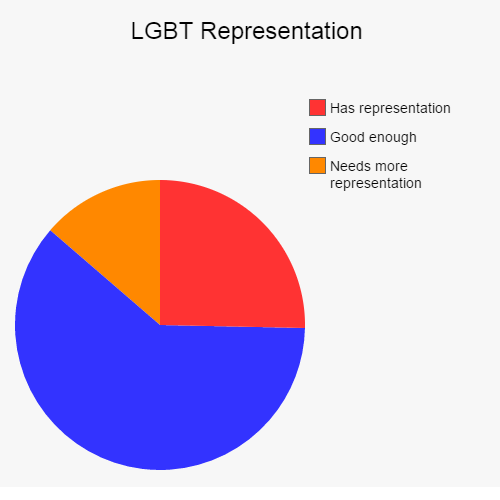Is the school ready to “come out” with LGBT Representation?

November 3, 2016
Within the past year, many positive things have happened in the LGBTQ+ community. The most major change being the legalization of same-sex marriage during the summer of 2015 by the Supreme Court. Due to this ruling, the LGBTQ+ community has been more represented in many places, including the school environment. As a member of the LGBTQ+ community, I believe our school’s representation of the community is great. However, some acknowledgement is still lacking.
One of the greatest accomplishments here is the approval of an LGBTQ+ club, “Gender Sexuality Association” (GSA) formed last year. GSA’s mission is to create a safe place for LGBTQ+ students and supporters to openly be themselves without facing any judgment they may experience during school hours. As a member, and now officer, I’ve been given a bigger outlet on LGBTQ+ themes as well as gender norms. The club has made me feel safe despite not having experienced any sort of bullying at school.
However, one thing I feel could be introduced to improve our attitude toward this community is the teaching of LGBTQ+ themes on school grounds. They do not necessarily need their own class, but they should, at least, be considered in health or sociology lessons. Health class, at its core, was created to teach students how to live a healthy life. This is the problem: the class taught me to be physically healthy, not mentally. That should change. Likewise, students can be taught to be emotionally healthy through sociology. Currently, the class teaches development, structure and human society. This would be a great class to teach LGBTQ+ themes, views and how each are handled in the media. However, the class is not a requirement unlike health class is. Both classes should be expanded to teach LGBTQ+ themes as one unit. Teaching the different sexualities and how to break gender norms, could tear down barriers. Like other classes, health and sociology should be able to adapt to current needs. LGBTQ+ themes are being taught in California to second graders now, so why not teach it at the high school level in Texas?
The biggest obstacle in implementing LGBTQ+ lessons in the classroom is how parents would react. A strong negative reaction could possibly get the lesson, or class removed and create controversy. There are parents who would not be supportive of having their kid learn about LGBTQ+ themes and gender norms due to religion, lifestyle or other personal reasons. On the other hand, school is a place students go to learn about different people and the world around them, so LGBTQ+ themes are a necessary thing to learn. Learning these things could broaden a student’s horizons and give them a different view of the world. That could be life-changing for a student who is struggling to understand their LGBTQ+ identity; it could save lives. Lessons could show identity and what they might be feeling is real. Also, their identity might not be discriminated against, due to increased knowledge.
It is the 21st century, LGBTQ+ themes, along with its people, should not be ignored in school, where students spend the majority of their time. While LGBTQ+ themes are not necessarily a revolutionary concept, they are just now getting their time to shine. The school is doing well when it comes to representing the LGBTQ+ community in a fair manner, but that does not mean it should stop there. In order to adapt with the changing times the school should continue making bigger leaps with the LGBTQ+ community.

